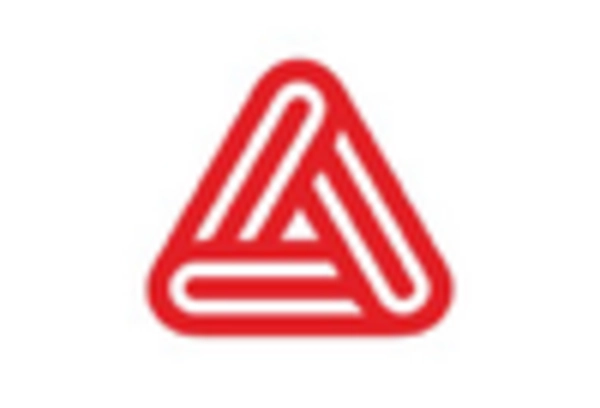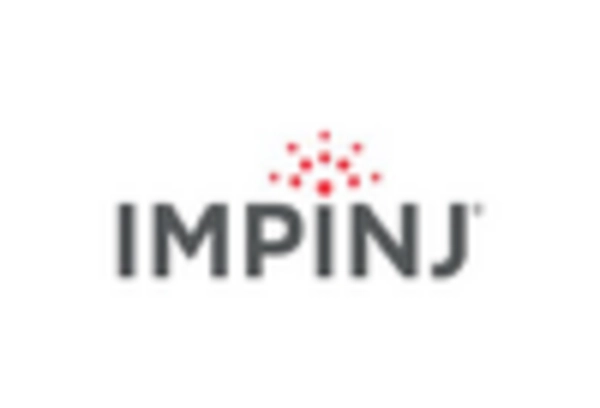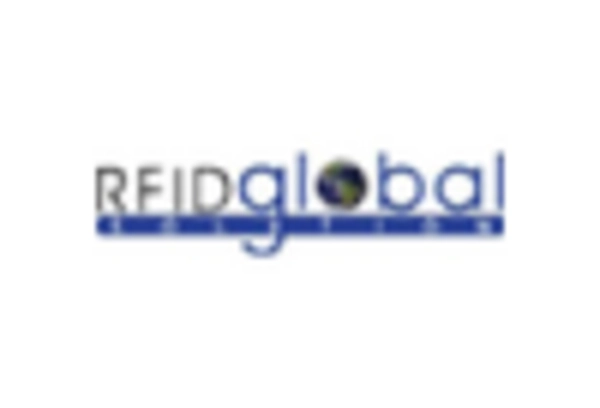Regulatory Compliance and Standards
Regulatory compliance is a critical driver for the healthcare RFID market in South America. Governments and health authorities are establishing stringent regulations to ensure the safety and efficacy of medical devices and supplies. RFID technology plays a vital role in helping healthcare organizations comply with these regulations by providing accurate tracking and documentation of medical products. As compliance becomes increasingly important, the adoption of RFID systems is likely to rise. The healthcare RFID market may see a growth trajectory of approximately 10% as organizations invest in technology that aids in meeting regulatory standards and enhances overall operational transparency.
Integration of IoT with RFID Solutions
The integration of Internet of Things (IoT) technology with RFID solutions is emerging as a key driver for the healthcare RFID market in South America. This convergence allows for enhanced data collection and analysis, enabling healthcare providers to make informed decisions based on real-time data. IoT-enabled RFID systems can monitor patient vitals and equipment status, facilitating proactive healthcare management. As the healthcare sector increasingly embraces digital transformation, the demand for integrated RFID solutions is expected to rise. This trend could potentially lead to a market growth rate of over 15% in the coming years, as organizations seek to leverage IoT capabilities to improve operational efficiency.
Growing Focus on Cost Reduction Strategies
In South America, the healthcare RFID market is being propelled by a growing focus on cost reduction strategies among healthcare providers. With rising operational costs, hospitals and clinics are seeking innovative solutions to minimize expenses while maintaining high-quality care. RFID technology offers a means to achieve this by improving asset utilization and reducing losses associated with misplaced or expired items. Reports suggest that implementing RFID systems can lead to cost savings of up to 25% in operational expenses. As healthcare organizations prioritize cost efficiency, the healthcare RFID market is likely to expand as more entities adopt RFID solutions to streamline their operations.
Rising Demand for Efficient Inventory Management
The healthcare RFID market in South America is experiencing a notable surge in demand for efficient inventory management solutions. Hospitals and clinics are increasingly adopting RFID technology to streamline their supply chain processes. This technology enables real-time tracking of medical supplies, reducing waste and ensuring that critical items are always available. According to recent estimates, the implementation of RFID systems can lead to a reduction in inventory costs by up to 30%. As healthcare providers strive to enhance operational efficiency, the healthcare RFID market is likely to benefit from this growing trend, with organizations investing in RFID solutions to optimize their inventory management practices.
Enhancing Patient Care through Real-Time Tracking
In South America, the healthcare RFID market is significantly driven by the need to enhance patient care through real-time tracking of medical equipment and patients. RFID technology allows healthcare providers to monitor the location and status of equipment, ensuring that essential devices are readily available when needed. This capability not only improves the quality of care but also reduces the time spent searching for equipment. Studies indicate that hospitals utilizing RFID systems can improve patient throughput by as much as 20%. Consequently, the healthcare RFID market is poised for growth as more institutions recognize the value of real-time tracking in delivering superior patient care.


















Leave a Comment